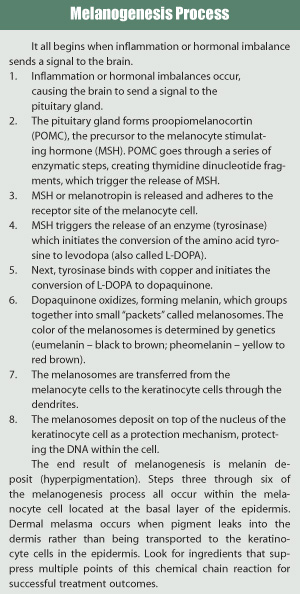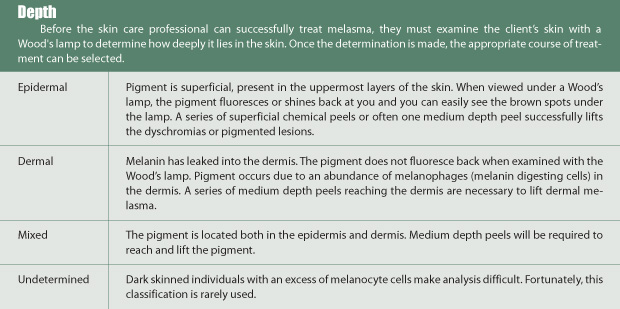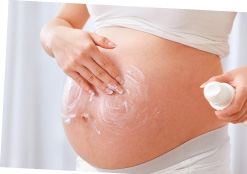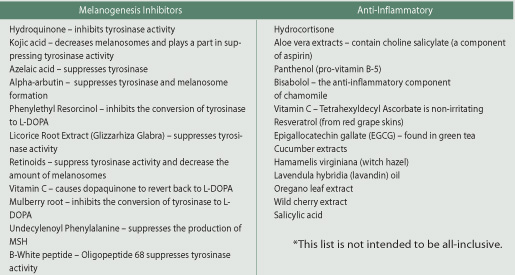The term melasma is derived from the Greek word melas, meaning black. It is a painless, benign skin condition that affects approximately 50,000,000 women worldwide. Described as dark patches of pigment that lie in the upper (epidermis) or mid layer (dermis) of the skin, melasma commonly appears in facial areas. However, it can present in any sun exposed area.
Understanding Melasma in Women
In women, melasma commonly occurs between the ages of 20 to 50. In the 20s and 30s, many women take oral contraceptives with synthetic estrogen and/or progesterone to prevent ovulation. The resulting hormonal imbalance can trigger melasma. Normally, melasma caused by birth control pills presents on the upper lip.
In their 40s and 50s, as women enter menopause, estrogen production decreases, allowing testosterone to become the dominant hormone in their bodies. This triggers melanin production, along with hair growth and sometimes oilier skin. Melasma often occurs during pregnancy due to the hormonal imbalances experienced during the gestational period. Latin, Asian, Hispanic and Middle Eastern individuals have higher incidences of melasma. While 90 percent of melasma clients are women, 10 percent of clients (nearly 5,000 worldwide) are men.
Melasma often occurs during pregnancy due to the hormonal imbalances experienced during the gestational period. Latin, Asian, Hispanic and Middle Eastern individuals have higher incidences of melasma. While 90 percent of melasma clients are women, 10 percent of clients (nearly 5,000 worldwide) are men.
Many clients with melasma do not understand what causes the dark patches on their face and have no idea how to treat it. Melasma can be very difficult to treat. One of the first tasks as a skin care professional is to educate the client as to what triggers stimulation and produces the uneven pigment in their skin. Client understanding will lead to compliance with the suggested treatment plan and a successful outcome.
It is critical for you to learn all that you can about the condition and use the appropriate tools to analyze the skin to develop successful treatment plans. The client must be thoroughly educated to gain compliance with the suggested professional treatment schedule and recommended daily care products.
 Understanding the Pigment Producing Process – Melanogenesis
Understanding the Pigment Producing Process – Melanogenesis
While a client may not quite grasp the chemical activity occurring within their skin, if the skin care professional understands the chemical signals and chain reactions that affects the cells, they can achieve successful outcomes. The skin care professional must understand how to lift existing pigment while incorporating ingredients that will suppress the chemical chain reaction occurring within the melanocyte cell. The skin care professional must educate the client on the importance of incorporating a broad-spectrum sun protection factor (SPF) to assist in preventing a reoccurrence.
Classifications  While melasma can appear on any sun exposed area of the body, it commonly presents on three areas of the face as follows:
While melasma can appear on any sun exposed area of the body, it commonly presents on three areas of the face as follows:
- Centrofacial - the central part of the face; 63 percent of cases
- Malar - the cheeks and nose; 21 percent of cases
- Mandibular - jawline; 16 percent of cases
Melasma can also present on the neck or arms. One study confirmed the occurrence of melasma on the forearms of Native Americans being given progesterone.
Melasma Area and Severity Index Scores
Once classification has been determined, the skin care professional will determine the severity of the melasma using Melasma Area and Severity Index (MASI) scores. This scoring method provides consistency of documentation and is often used in clinical trials. MASI scores are as follows:
Melasma is often very stubborn and difficult to treat, especially if located in the dermis. Medium depth peels are considered very active and can produce inflammation. Inflammation, along with hormonal imbalances, is the catalysts for the melanogenesis cycle that results in pigment production.
The key to successful outcomes when using a more active treatment is incorporating anti-inflammatories such as hydrocortisone after treatment. Common recommended use is at least two to four times a day for two to four weeks post-peel. Darker Fitzpatrick skin types need to be especially diligent with post-treatment compliance. Often times a 1 percent hydrocortisone cream will be sufficient following medium depth peel, but if the skin care professional determines it necessary, up to 2.5 percent strength may be prescribed by a prescribing physician. Sunscreen must be worn outdoors and reapplied every 90 minutes to two hours or as the manufacturer recommends.
Prevention
Prevention is primarily aimed at restoring hormonal balance and limiting exposure to ultraviolet rays. This includes use of a broad spectrum ultraviolet sunscreen and sun avoidance. It is important to note that once the clinician is successful in lifting existing pigmented lesions, protection from ultraviolet exposure is critical. Sun exposure will reactivate the melanocyte (pigment producing) cells, causing a reoccurrence of the condition, with pigment often appearing even darker.
 Treatment – Lift, Suppress, Calm and Protect
Treatment – Lift, Suppress, Calm and Protect
Treatment requires lifting existing pigment, suppressing the stimulation of future pigment, calming the heat and inflammation in the skin, and protecting the skin from ultraviolet exposure.
Lasers may be used to treat melasma, but they generally produce only temporary results. Laser therapy is not the primary choice to treat melasma, as studies reveal little to no improvement for most clients. They may actually worsen some types of melasma and should be used with caution.
Chemical peels are often the preferred treatment choice. A peel exfoliates the skin, lifting existing pigmented lesions. Some professionals like to include microdermabrasion or dermaplaning with a peel for a more active treatment. The level of peel chosen (superficial or medium depth) is determined by the type of melasma (epidermal, dermal or mixed).
When addressing melasma, one must suppress inflammation to prevent stimulating the melanogenesis (pigment producing) process. Some skin care professionals prefer to pretreat with hydroquinone (HQ) prior to peeling, as hydroquinone is a melanogenesis inhibitor. Others prefer to incorporate anti-inflammatory ingredients immediately following peel treatments. The combination of pretreating with melanogenesis inhibitors and incorporating anti-inflammatories post peel yields excellent results.Minimizing sun exposure helps to prevent the melasma from worsening. When outdoors, a sunscreen containing zinc oxide provides both ultraviolet radiation (UVA and UVB) protection and should be considered mandatory. Wearing a wide brimmed hat while outdoors is also suggested.
 Effective Ingredients to Suppress Melanogenesis and Calm Inflammation*
Effective Ingredients to Suppress Melanogenesis and Calm Inflammation*
Treatment During Pregnancy and Lactation
Many women experience the “pregnancy mask” due to their body’s fluctuating hormones in preparation for childbirth. Melasma occurs more frequently in the second and third trimesters of pregnancy. Many expectant mothers also experience linea nigra or “line of pregnancy,” the dark line of pigment that extends from the belly button to the pubic area. Linea nigra (Latin for black line) occurs during the second trimester as estrogen levels fluctuate. The line often fades or disappears after birth. Some women may experience melasma when hormones fluctuate again during lactation.
Any chemical peel and certain topical creams, including those containing retinoids (vitamin A) or hydroquinone, are contraindicated during pregnancy. An expectant mother can treat skin discolorations with gentler pigment suppressing (melanogenesis inhibiting) ingredients including azelaic acid, vitamin C, kojic acid and licorice. It is always best to get approval from the client’s physician’s for any topicals used during pregnancy.
Clients may experience melasma due to contraceptives, during pregnancy, lactation, menopause, or a genetic predisposition to the condition especially in darker Fitzpatrick skin types. They are often hoping for a quick fix.
Skin care professionals must explain that melasma will not disappear overnight. The suppression of reoccurring pigment needs to be a lifetime commitment. Assure the client that compliance with regular treatments, appropriate daily care, and education on its triggers, anyone can beat melasma.
 Director of Sales and Educational Programs for Vitality Institute Medical Products, Brenda Linday, L.E., L.E.I. has over 12 years of experience in the medical aesthetic industry. She is an industry author and has trained hundreds of skin health professionals worldwide on safe and effective chemical peeling techniques while instilling the importance of credibility, valuing lasting client relationships, and showing skin care professionals how corrective and preventative skin care can truly improve a client’s life.
Director of Sales and Educational Programs for Vitality Institute Medical Products, Brenda Linday, L.E., L.E.I. has over 12 years of experience in the medical aesthetic industry. She is an industry author and has trained hundreds of skin health professionals worldwide on safe and effective chemical peeling techniques while instilling the importance of credibility, valuing lasting client relationships, and showing skin care professionals how corrective and preventative skin care can truly improve a client’s life.
